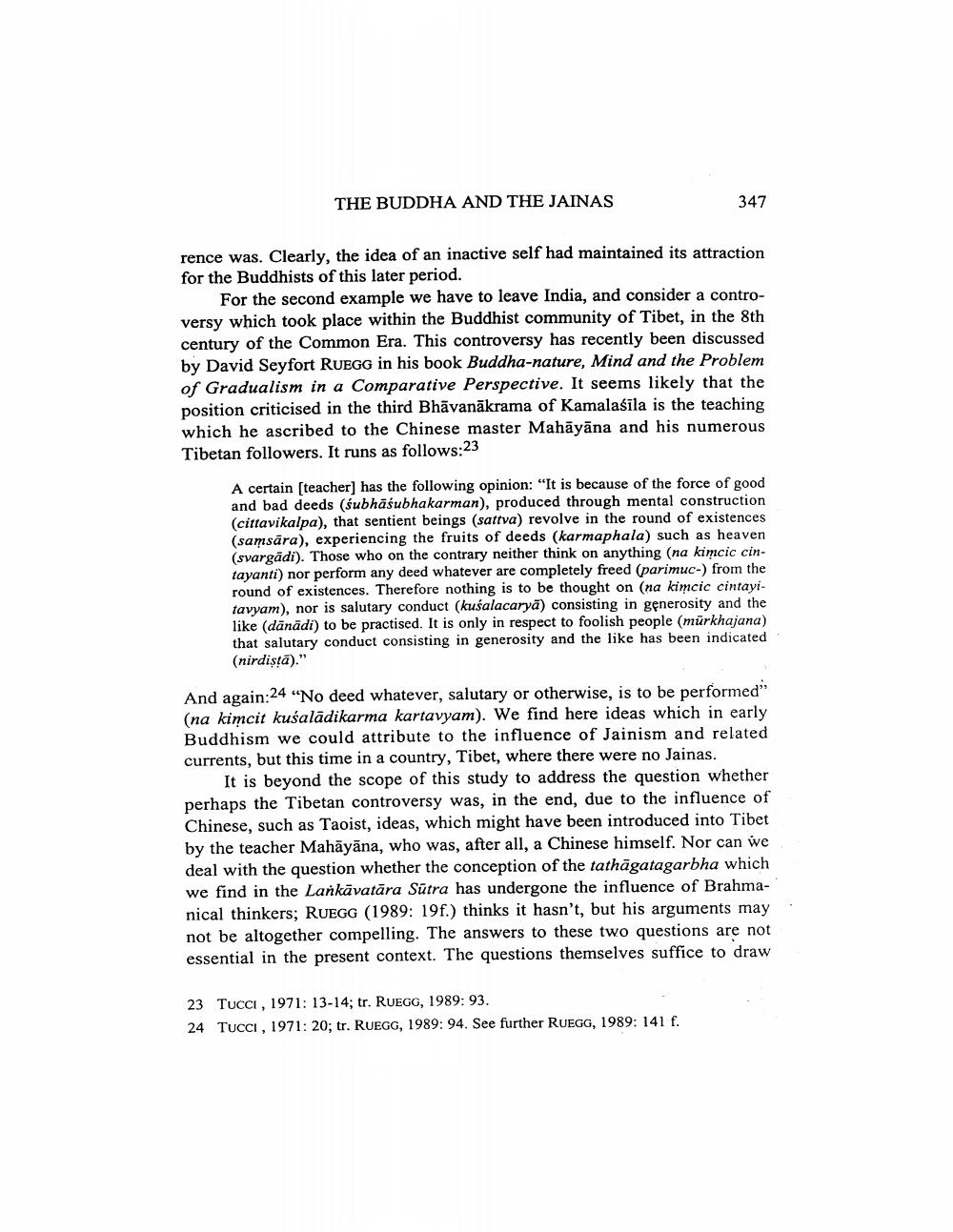________________
THE BUDDHA AND THE JAINAS
347
rence was. Clearly, the idea of an inactive self had maintained its attraction for the Buddhists of this later period.
For the second example we have to leave India, and consider a controversy which took place within the Buddhist community of Tibet, in the 8th century of the Common Era. This controversy has recently been discussed by David Seyfort RUEGG in his book Buddha-nature, Mind and the Problem of Gradualism in a Comparative Perspective. It seems likely that the position criticised in the third Bhāvanākrama of Kamalaśīla is the teaching which he ascribed to the Chinese master Mahāyāna and his numerous Tibetan followers. It runs as follows:23
A certain (teacher) has the following opinion: “It is because of the force of good and bad deeds (śubhāśubhakarman), produced through mental construction (cittavikalpa), that sentient beings (sattva) revolve in the round of existences (samsára), experiencing the fruits of deeds (karmaphala) such as heaven (svargadi). Those who on the contrary neither think on anything (na kimcic cintayanti) nor perform any deed whatever are completely freed (parimuc-) from the round of existences. Therefore nothing is to be thought on (na kimcic cintayitavyam), nor is salutary conduct (kušalacaryā) consisting in generosity and the like (dänādi) to be practised. It is only in respect to foolish people (mürkhajana) that salutary conduct consisting in generosity and the like has been indicated (nirdista)."
And again:24 "No deed whatever, salutary or otherwise, is to be performed (na kimcit kuśalādikarma kartavyam). We find here ideas which in early Buddhism we could attribute to the influence of Jainism and related currents, but this time in a country, Tibet, where there were no Jainas.
It is beyond the scope of this study to address the question whether perhaps the Tibetan controversy was, in the end, due to the influence of Chinese, such as Taoist, ideas, which might have been introduced into Tibet by the teacher Mahāyāna, who was, after all, a Chinese himself. Nor can we deal with the question whether the conception of the tathāgatagarbha which we find in the Lankāvatāra Sutra has undergone the influence of Brahmanical thinkers; RUEGG (1989: 19f.) thinks it hasn't, but his arguments may not be altogether compelling. The answers to these two questions are not essential in the present context. The questions themselves suffice to draw
23 Tucci, 1971: 13-14; tr. RUEGG, 1989: 93. 24 TUCCI, 1971:20; tr. RUEGG, 1989: 94. See further RUEGG, 1989: 141 f.




